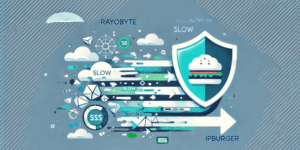Your data faces a lot of risks, vulnerabilities, and threats every day – whether you are online or offline. A good majority of these threats are malware threats. Malware is the short form of malicious software. Malware is a software designed with the specific intent to harm your data and achieve something sinister either directly or indirectly. Most times, malware either delete your data, damages your systems or even keeps disrupting services across a network. There are many types of malware, and we are going to look at the most common ones in this article.
Virus
This is the most known type of malware. It is aptly named due to its similarities to the biological virus. In computers, viruses are malicious programs designed with various intents. They mostly alter/delete ones’ data and this could lead to a system crash. Viruses attach themselves to a host program, and when the program is launched, the viruses get executed. Due to the dependency from its host, viruses that are usually spread through downloads have various attachments.
Gusano
Un gusano es un tipo de malware que actúa como portador debido a su capacidad para propagarse por las redes rápidamente y de forma que no se detecta durante mucho tiempo. Es debido a esta capacidad por lo que recibió el nombre de gusano. Lo que hace peligrosos a los gusanos es que pueden replicarse a sí mismos, encontrar otras direcciones de red e incluso tener un archivo de trabajo. Dado que los gusanos son técnicamente portadores, suelen ir emparejados con diversas cargas útiles diseñadas para causar daño o incluso hacer invencible al gusano. Los gusanos por sí solos pueden provocar la caída de los canales de información debido a su rápida replicación.
ransomware
Este tipo de malware también es una ciberamenaza diseñada para dañar los datos de la víctima o para que su creador obtenga beneficios; la elección depende de la víctima. El ransomware es como un gusano en cuanto a su forma de propagarse. Una vez que infecta un sistema, cifra la mayor parte de los datos del usuario e incluso lo bloquea para luego pedir un rescate a cambio de una clave de descifrado. Hoy en día, los pagos solicitados se envían utilizando una criptomoneda debido a su naturaleza anónima.
Caballo de Troya
Todos hemos oído hablar de la mitología griega que describe cómo la ciudad de Troya cayó debido a un engañoso caballo de madera durante la guerra de Troya. La historia cuenta cómo el ejército griego se escondió en el caballo de madera que los troyanos llevaron de vuelta a la ciudad. En terminología informática, un malware troyano hace lo mismo. Un caballo de Troya puede parecer insospechado, pero cuando entra con éxito en un sistema, crea una puerta trasera para que otro malware más dañino entre en el sistema.
Spyware
As the name suggests, this is a type of malware that’s meant (well you guessed it) to spy on you. Spyware has the ability to monitor everything or something specific that you do on your computer. It tracks your internet behavior and records your keystrokes that can be decoded or interpreted to reveal your usernames and even passwords. It can also download other malware or programs without your permission. Spyware can be hard to detect since it hides inside legitimate programs.
Adware
Adware can be seen as the least harmful malware as they concentrate on making a profit rather than deleting your system files. Sometimes they may cause your CPU to overheat and crash your system. Adware can be annoying since they bombard you with ads and banners in a scheduled period of let’s say after 10 minutes. The situation becomes more frustrating when your antivirus/antimalware software doesn’t find anything when you scan your system.
Most of the above malware is primarily spread via the internet. To avoid them, always be cautious regarding what you download online.



